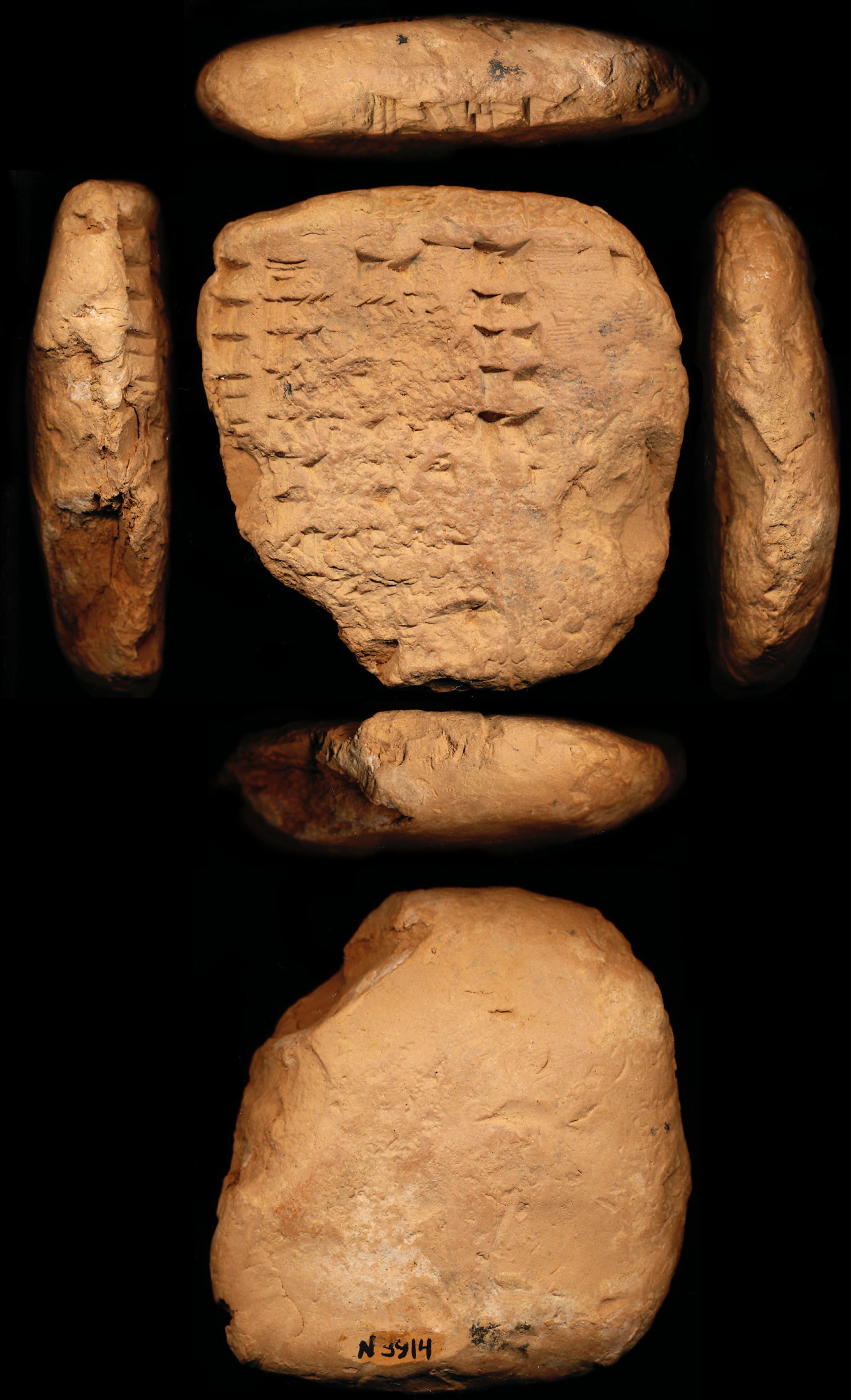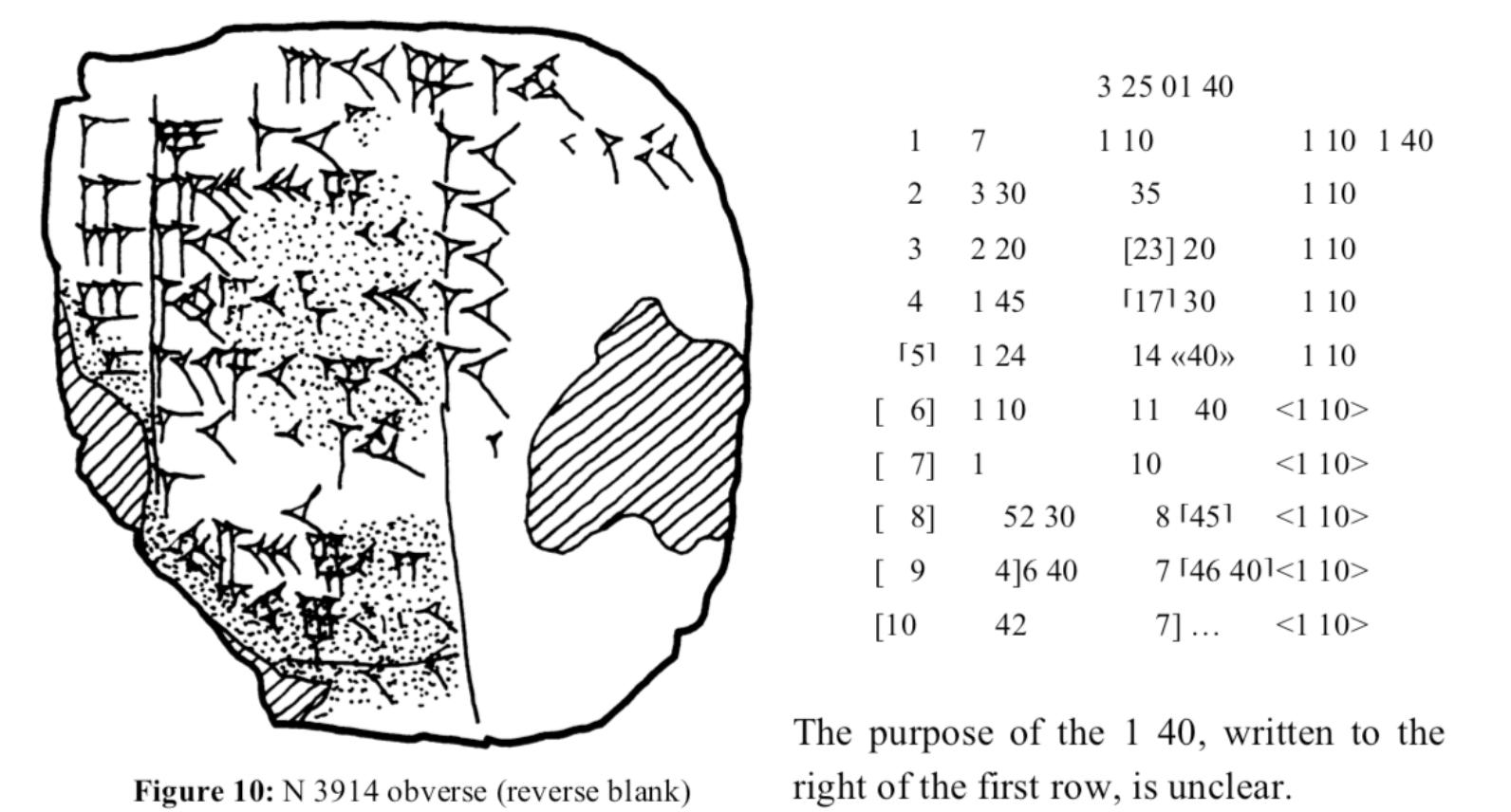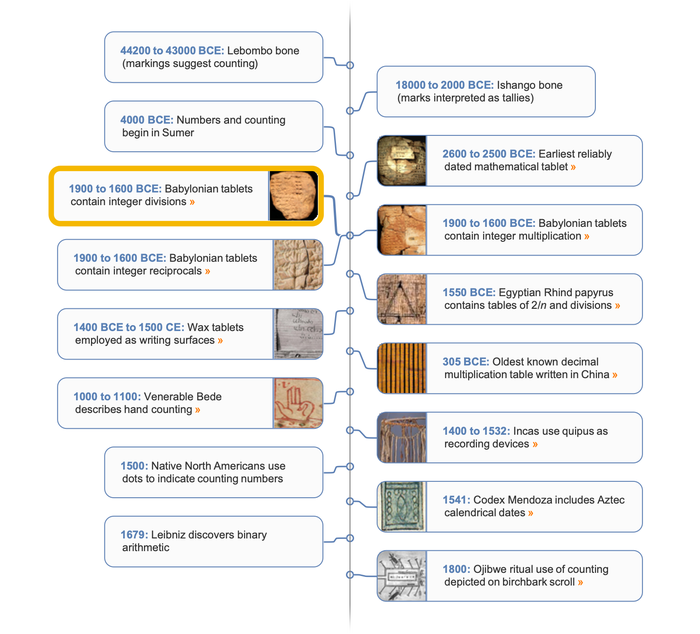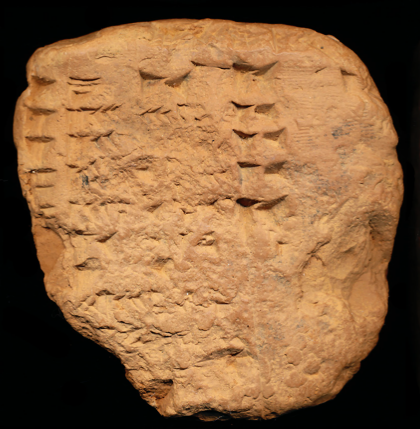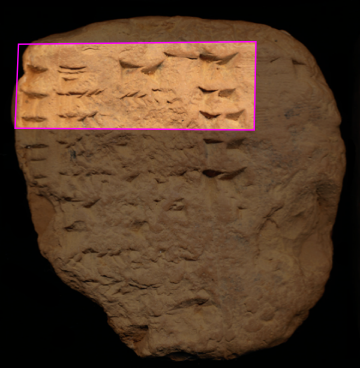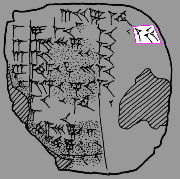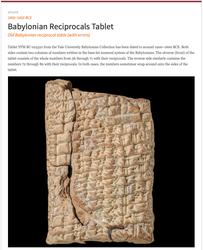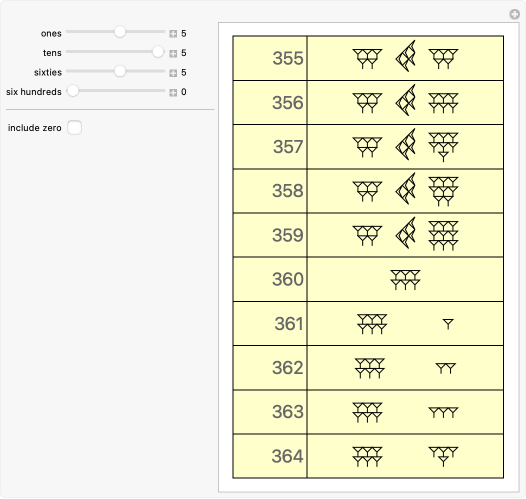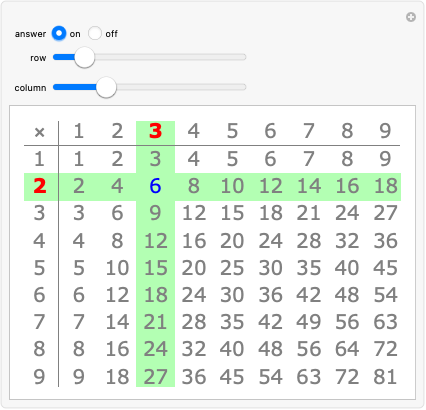around 1900–1600 BCE
Sumerian 7 Quotient and 10 Product Tablet
Reciprocals and multiplication by 7 and 10 in cuneiform
Many mathematical Babylonian tablets contain tables of divisions or multiplications. Tablet N3914, held by the Penn Museum in Philadelphia, tabulates 7/n and a number of products involving those quotients for integers n from 1 to 10. All are written in the base 60, or sexagesimal, number representation used by the Babylonians.

This old Babylonian tablet contains division and multiplication calculations laid out in a tabular format. The first column of the table is a simple count of the integers 1 to 10, though the numbers 5–10 are partially or completely missing. The second column gives 7 divided by the numbers in the first column, while the third column gives the numbers in the second column multiplied by 10. The fourth and final column gives the products of the first and third columns which, because n × (7/n × 10), is always the number 70, written in base-60 numbers as 1 10, i.e. 1 × 60 + 10 × 1. The number at the top of the third column is the sum of the numbers in that column. The significance of an additional number written at the end of the first row is not known.
